Home>Garden Essentials>What Are The Best Plants To Grow In A Vertical Garden In Florida


Garden Essentials
What Are The Best Plants To Grow In A Vertical Garden In Florida
Modified: April 23, 2024
Discover the top plants for your vertical garden in Florida and create a lush green paradise with our expert gardening tips and recommendations.
(Many of the links in this article redirect to a specific reviewed product. Your purchase of these products through affiliate links helps to generate commission for Storables.com, at no extra cost. Learn more)
Introduction
Welcome to the world of vertical gardening in sunny Florida! Whether you have limited space or simply want to add a touch of greenery to your outdoor area, vertical gardening offers a unique and space-efficient solution. By utilizing vertical structures like walls, fences, or trellises, you can create a stunning garden that not only enhances the aesthetic appeal of your space but also provides an abundance of fresh produce and vibrant foliage.
Vertical gardening has become increasingly popular in urban areas where space is limited, but its benefits extend far beyond that. Florida, known for its warm climate and abundant sunshine, is the perfect setting for vertical gardening. With its long growing season and ample sunlight, you can grow a wide variety of plants and enjoy a flourishing garden virtually all year round.
Not only does vertical gardening maximize your available space, but it also offers numerous benefits. One of the primary advantages is its ability to enhance air circulation and light exposure for your plants. This can result in healthier, more vigorous growth and minimize the risk of fungal diseases. Additionally, vertical gardening can help you optimize water usage and reduce the risk of soil erosion.
Before diving into the world of vertical gardening, it’s essential to consider a few factors specific to the Florida climate. The hot and humid weather, as well as the occasional intense storms, can pose challenges for plant growth. However, with the right plant selection, proper care, and a few helpful tips, you can create a stunning vertical garden that thrives in the Florida climate.
In this article, we will explore some of the best plants to grow in a vertical garden in Florida. Whether you’re a seasoned gardener or just starting out, these plant selections will provide you with a beautiful and bountiful garden that will flourish in the Florida sun. So, let’s dive in and discover the perfect plants for your vertical garden in the Sunshine State.
Key Takeaways:
- Vertical gardening in Florida maximizes space, optimizes sunlight exposure, and offers a diverse range of plant options, from tomatoes and herbs to strawberries and ornamental plants, creating a lush and thriving oasis.
- Successful vertical gardening in Florida requires thoughtful plant selection, proper support, consistent care, and attention to factors like sunlight, water, soil, and pest management, leading to a satisfying and productive garden experience.
Read more: What Herbs To Grow In A Vertical Garden
Benefits of Vertical Gardening in Florida
When it comes to gardening in Florida, vertical gardening offers several unique advantages that make it a popular choice for gardeners of all levels of experience. Here are some of the key benefits of vertical gardening in Florida:
1. Maximizes Space: Florida’s urban areas often have limited outdoor space, making vertical gardening an excellent option. By utilizing vertical structures such as walls, fences, or trellises, you can make the most of your available space and still enjoy a thriving garden.
2. Provides Better Air Circulation: Vertical gardening allows for better airflow around your plants compared to traditional gardens. This improved air circulation helps prevent the build-up of moisture and reduces the risk of fungal diseases, which can be particularly challenging in Florida’s humid climate.
3. Optimizes Sunlight Exposure: Florida is blessed with ample sunlight, and vertical gardening allows you to maximize this valuable resource. By positioning your plants vertically, you can ensure that each plant receives the required amount of sunlight, resulting in healthier and more productive growth.
4. Increases Plant Variety: Vertical gardening opens up possibilities for growing a wider range of plants in a smaller space. You can grow not only traditional vegetables but also flowers, herbs, and even ornamental plants. This allows you to create a diverse and visually appealing garden.
5. Reduces Soil Erosion: Florida’s frequent rain showers can lead to soil erosion. However, vertical gardening helps minimize this issue by keeping the soil in place. The vertical structures act as a natural barrier, preventing soil erosion and protecting the root systems of your plants.
6. Saves Water: In Florida, water conservation is crucial. With vertical gardening, you can optimize water usage by utilizing techniques like drip irrigation or hydroponics. This helps minimize water wastage and ensures that your plants receive the necessary moisture without excessive runoff.
7. Enhances Aesthetic Appeal: Vertical gardens add a unique and visually stunning element to any outdoor space. Whether you choose to grow cascading vines, colorful flowers, or a mix of foliage, vertical gardening offers endless possibilities for creating an attractive and eye-catching garden.
By maximizing space, improving air circulation, optimizing sunlight exposure, and offering numerous other benefits, vertical gardening in Florida allows you to create a lush and thriving garden in even the smallest of spaces. Now, let’s dive into the factors you should consider when embarking on your vertical gardening journey in the Sunshine State.
Factors to Consider for Vertical Gardening in Florida
While vertical gardening offers numerous advantages in Florida, there are a few key factors to consider to ensure the success of your garden. Taking these factors into account will help you choose the right plants and implement the necessary strategies for your vertical garden. Here are some important factors to consider:
1. Sunlight: Florida is known as the Sunshine State for a reason – it receives abundant sunlight throughout the year. However, some areas may have pockets of shade due to architectural structures or large trees. Before setting up your vertical garden, evaluate the amount of sunlight available to determine which plants will thrive in your specific location.
2. Heat and Humidity: Florida’s hot and humid climate can be both a blessing and a challenge for gardeners. While many plants love the warm weather, excessive heat and humidity can put stress on plants and increase the risk of diseases. Choose plants that are well-suited to the Florida climate and maintain good airflow to minimize humidity-related issues.
3. Wind and Storms: Florida is prone to strong winds and occasional storms, especially during hurricane season. When planning your vertical garden, consider the stability and wind resistance of your chosen structures and plants. Secure your vertical garden properly to prevent damage during inclement weather.
4. Soil Quality: Florida’s soil is diverse, with variations from sandy to clayey compositions. Determine the soil type in your area and make any necessary amendments to ensure proper drainage and nutrient availability for your vertical garden. Consider using high-quality potting soil mixed with organic matter to create an optimal growing environment.
5. Watering: Florida’s warm weather and sporadic rain showers make proper watering crucial for vertical gardens. Install an efficient irrigation system, such as drip irrigation or a soaker hose, to deliver water directly to the plants’ roots. Regularly monitor soil moisture levels and adjust your watering schedule accordingly to prevent over or under watering.
6. Plant Selection: Choose plants that are well-suited to vertical gardening and the Florida climate. Look for varieties that thrive in warm temperatures, have good disease resistance, and can handle the occasional heavy rain. Consider the size and weight of plants when selecting structures or trellises to support their growth.
7. Pests and Diseases: Florida is known for its diverse range of pests and diseases that can affect plants. Stay vigilant and monitor your vertical garden regularly for any signs of pest infestation or disease. Employ organic pest control methods and proper plant care practices to minimize the risk of damage.
8. Maintenance: Like any garden, vertical gardens require regular maintenance. Prune and train your plants as needed to encourage proper growth and maintain their shape. Remove any dead or diseased plant material to prevent the spread of diseases. Regularly check your structures for stability and make any necessary repairs.
By considering these factors and making appropriate adjustments, you can create a successful and thriving vertical garden in the beautiful state of Florida. Now, let’s delve into some of the best plants to grow in your vertical garden in the Sunshine State.
Best Plants for Vertical Gardening in Florida
When it comes to choosing plants for a vertical garden in Florida, it’s important to select varieties that can thrive in the state’s warm climate, withstand high humidity, and provide an abundant harvest. Here are some top plant choices for successful vertical gardening in Florida:
1. Tomatoes: Tomatoes are a staple in many gardens, and Florida’s warm climate provides the perfect conditions for growing them. Opt for vining or semi-determinate varieties that can be vertically trained on trellises or stakes. Look for heat-tolerant cultivars like ‘Celebrity,’ ‘Cherokee Purple,’ or ‘Patio’ for a bountiful harvest.
2. Herbs: Herbs like basil, parsley, and thyme are excellent choices for vertical gardening in Florida. These aromatic plants thrive in the warm climate and can add flavor and fragrance to your dishes. Grow them in vertical pockets or modular wall planters for easy access to fresh herbs all year round.
3. Lettuce and Leafy Greens: Florida gardeners can enjoy a wide variety of leafy greens throughout the year. Lettuce, kale, spinach, and arugula are all great options for vertical gardening. These fast-growing plants can be grown in stacked planters or hanging baskets, making efficient use of space and providing a continuous supply of fresh greens for salads and sandwiches.
4. Peppers: Peppers, both sweet and spicy varieties, thrive in Florida’s warm temperatures. Choose compact or dwarf pepper varieties that can be trained vertically on trellises. ‘Cubanelle,’ ‘Banana,’ ‘Jalapeno,’ and ‘Cayenne’ peppers are popular choices for vertical gardening in Florida.
5. Strawberries: Florida’s climate is perfect for growing sweet and juicy strawberries. Vertical gardening provides an ideal way to grow strawberries, as their trailing habit makes them well-suited for hanging baskets or stacked planters. Look for day-neutral or ever-bearing varieties like ‘Seascape’ or ‘Fern’ for a continuous harvest throughout the year.
6. Cucumbers: Cucumbers are prolific climbers, making them ideal for vertical gardening. Choose compact or bush varieties, such as ‘Bush Champion’ or ‘Pick a Bushel,’ that produce an abundance of crisp cucumbers. Provide trellises or A-frame structures for the vines to climb, ensuring proper support and easy harvesting.
7. Beans and Peas: Beans and peas are excellent choices for vertical gardening, as their climbing nature allows them to utilize vertical space effectively. Grow pole beans like ‘Kentucky Wonder’ or ‘Blue Lake’ and varieties of peas like ‘Sugar Snap’ or ‘Snow Peas’ on trellises, fences, or bamboo supports to maximize your harvest.
8. Zucchini and Squash: While zucchini and squash are known for their sprawling habit, there are compact and bush varieties available that are suitable for vertical gardening. Look for varieties like ‘Patio Star’ or ‘Bush Baby’ that are specifically bred for smaller spaces. Provide sturdy support for the growing fruits and harvest them when they are still young and tender.
9. Ornamental Plants: Don’t forget to add ornamental plants to your vertical garden for visual appeal. Ferns, ivy, and bougainvillea are popular choices for their cascading and trailing growth habits. These plants can be grown in hanging baskets or modular wall planters to create a stunning vertical display of color and texture.
These plant selections are just a starting point for your vertical garden in Florida. Experiment with different varieties and combinations to find what works best for your specific location and gardening preferences. Keep in mind the sun exposure, water requirements, and growth habits of each plant to create a thriving and visually pleasing vertical garden.
Now that you have an idea of the best plants for vertical gardening in Florida, let’s explore some helpful tips for successful vertical gardening in the Sunshine State.
Tomatoes
Tomatoes are a popular choice for vertical gardening in Florida due to the state’s warm climate and ample sunlight. Here are some tips for successfully growing tomatoes in a vertical garden:
- Variety Selection: Choose vining or semi-determinate tomato varieties that are well-suited for vertical growth. Look for heat-tolerant cultivars such as ‘Celebrity,’ ‘Cherokee Purple,’ or ‘Patio’ that are known for their productivity and flavor.
- Trellising or Staking: Tomatoes require support for their upright growth. Install sturdy trellises, stakes, or cages to provide support and guide the plants’ growth. Secure the plants to the structures using soft ties or garden twine to prevent damage to the stems.
- Proper Plant Spacing: When planting tomatoes, make sure to space them adequately to allow for proper airflow and sunlight penetration. This helps prevent diseases and ensures that each plant receives sufficient light for optimal growth. Check the spacing requirements for the specific tomato variety you are growing.
- Fertilization and Soil Amendments: Tomatoes are heavy feeders, so ensure that the soil is nutrient-rich and well-draining. Incorporate organic matter, compost, or well-balanced fertilizer into the soil before planting. Regularly feed your tomato plants with a balanced fertilizer high in phosphorus and potassium to promote fruit development.
- Watering: Tomatoes require consistent and deep watering to prevent stress and blossom-end rot. Monitor the moisture levels in the soil and water when the top inch becomes dry. Avoid overhead watering, which can lead to leaf diseases. Instead, water at the base of the plants to keep the foliage dry.
- Pruning and Removing Suckers: To promote a healthy and productive tomato plant, prune the lower leaves and suckers that emerge from the leaf axils. This directs energy towards fruit production and improves airflow within the plant, reducing the risk of diseases.
- Pest and Disease Management: Keep an eye out for common tomato pests in Florida, such as aphids, whiteflies, and caterpillars. Monitor your plants regularly and employ organic pest control methods like hand-picking or using insecticidal soap. Properly sanitize your gardening tools to prevent the spread of diseases.
- Harvesting: Tomatoes are ripe and ready to harvest when they reach their mature color, become firm, and have a slightly soft feel. Gently twist or cut the fruit from the plant to avoid damaging the stems. Harvest regularly as tomatoes continue to ripen throughout the growing season.
- Succession Planting: To extend your tomato harvest, consider practicing succession planting. Start new tomato plants indoors a few weeks before the last frost date to ensure a continuous supply of fresh tomatoes throughout the season.
By following these tips, you can enjoy a bountiful harvest of flavorful tomatoes from your vertical garden in Florida. Experiment with different tomato varieties and techniques to find what works best for your garden. Next, let’s explore another popular choice for vertical gardening in Florida: herbs.
Read more: How To Grow A Vertical Garden
Herbs (such as basil, parsley, and thyme)
Herbs are not only a flavorful addition to your culinary creations but also a beautiful and fragrant addition to your vertical garden in Florida. Here are some tips for successfully growing herbs in a vertical garden:
- Variety Selection: Choose herbs that thrive in the warm climate of Florida and are well-suited to vertical gardening. Popular herb choices include basil, parsley, mint, thyme, rosemary, and oregano. Consider both culinary and aromatic varieties to add variety to your garden.
- Vertical Planting Options: Herbs can be grown in various vertical gardening systems, including modular wall planters, hanging baskets, or vertical pockets. Select a system that best suits your available space and aesthetic preferences.
- Soil and Potting Mix: Use a well-draining potting mix specifically formulated for herbs to ensure healthy root growth and moisture control. Incorporate organic matter or compost to provide essential nutrients to the plants.
- Sunlight Requirements: Most herbs require at least six hours of direct sunlight per day to thrive. Choose a sunny location for your vertical garden or provide supplemental lighting if needed. Herbs like basil and parsley appreciate full sun, while herbs like mint and cilantro can tolerate partial shade.
- Watering: Herbs generally prefer consistent moisture without being waterlogged. Ensure that the soil is evenly moist, but not saturated. Water your herbs when the top inch of soil feels dry. Consider using self-watering systems or drip irrigation to provide water directly to the plants’ roots.
- Harvesting: Harvest your herbs regularly to promote healthy growth and prolong the harvest season. Pinch or cut the leaves as needed, starting from the top of the plant. Avoid removing more than one-third of the plant’s foliage at once to allow for continued growth.
- Pruning and Maintenance: Regularly trim your herbs to promote bushy and compact growth. Pinch back the tips of the plants to encourage branching and prevent them from becoming leggy. Remove any yellowed or dead leaves to maintain the plant’s health and appearance.
- Pest Control: While herbs are relatively resistant to pests, occasional pests like aphids or caterpillars may appear. Inspect your plants regularly and manually remove any pests. Consider using natural pest control methods, such as neem oil or insecticidal soap, if necessary.
- Companion Planting: Take advantage of companion planting techniques to deter pests, attract beneficial insects, and enhance the growth of your herbs. For example, planting basil alongside tomatoes can improve the flavor of the tomatoes while repelling tomato hornworms.
- Propagation: Expand your herb garden by propagating herbs from cuttings or division. Many herbs, like basil, mint, and rosemary, can easily be propagated by taking stem cuttings and rooting them in water or a moist growing medium.
By following these tips, you can enjoy a flourishing herb garden in your vertical garden in Florida. Experiment with different herb varieties and explore their unique flavors and aromas. Don’t be afraid to get creative with your herb combinations and incorporate them into your culinary adventures. Next, let’s explore another green and leafy option for vertical gardening in Florida: lettuce and leafy greens.
Lettuce and Leafy Greens
Lettuce and leafy greens are excellent choices for vertical gardening in Florida. These fast-growing and nutrient-rich plants can provide a continuous supply of fresh greens for salads, wraps, and sandwiches. Here are some tips for successfully growing lettuce and leafy greens in a vertical garden:
- Variety Selection: Choose varieties of lettuce and leafy greens that are well-suited for the Florida climate and vertical gardening. Popular options include romaine lettuce, leaf lettuce, spinach, kale, arugula, and Swiss chard. Consider both green and red varieties to add color to your vertical garden.
- Vertical Planting Options: Lettuce and leafy greens can be grown in various vertical gardening systems such as stacked planters, hanging baskets, or modular wall planters. Choose a system that allows for efficient use of space and proper drainage.
- Soil and Potting Mix: Use a well-draining potting mix rich in organic matter to provide the necessary nutrients for your leafy greens. Consider incorporating compost or worm castings into the soil mixture to improve fertility.
- Sunlight Requirements: Most lettuce and leafy greens prefer partial shade or dappled sunlight, especially in the warmer months of the Florida growing season. Position your vertical garden in a spot that provides morning sun and afternoon shade to prevent the plants from bolting.
- Watering: Lettuce and leafy greens require consistent moisture to prevent bitterness and wilting. Water your plants regularly, keeping the soil evenly moist. Avoid overhead watering, as it can increase the risk of diseases. Consider using self-watering systems or drip irrigation for efficient and targeted watering.
- Succession Planting: For a continuous harvest, practice succession planting by sowing new seeds every few weeks. This ensures a steady supply of fresh greens as older plants are harvested or bolt due to heat. Follow the instructions on seed packets for recommended spacing and planting times.
- Harvesting: Begin harvesting lettuce and leafy greens as soon as the leaves reach a usable size. Cut the outer leaves, leaving the central rosette of the plant intact to allow for continued growth. Regular harvesting promotes fresh leaf production and prevents plants from becoming overly mature and bitter.
- Fertilization: Leafy greens are relatively heavy feeders. Consider applying a balanced organic fertilizer regularly or using a slow-release fertilizer according to package instructions. Monitor your plants for signs of nutrient deficiencies, such as pale or yellowing leaves, and adjust fertilization accordingly.
- Pest Control: Keep an eye out for common pests such as aphids, snails, or leaf-eating caterpillars. Inspect your plants regularly and manually remove any pests. Consider using organic pest control methods like insecticidal soap or neem oil if pest populations become a problem.
- Companion Planting: Take advantage of companion planting by interplanting lettuce and leafy greens with herbs like dill, cilantro, or chamomile to attract beneficial insects and deter pests. Avoid planting them near strong-scented plants like onions, as it may affect the flavor of the greens.
By following these tips, you can enjoy a vibrant and productive vertical garden filled with fresh and nutritious lettuce and leafy greens in Florida. Experiment with different varieties and explore the unique flavors and textures they have to offer. Now you have the knowledge to create a successful vertical garden with lettuce and leafy greens. Next, let’s explore another favorite for vertical gardening in Florida: peppers.
Peppers
Peppers are a popular choice for vertical gardening in Florida, thanks to the state’s warm climate and extended growing season. Whether you prefer sweet bell peppers or fiery chili peppers, vertical gardening allows you to maximize space and yield an abundant harvest. Here are some tips for successfully growing peppers in a vertical garden:
- Variety Selection: Choose pepper varieties that are well-suited for the Florida climate and vertical gardening. Popular options include bell peppers, jalapenos, banana peppers, serranos, cayenne peppers, and habaneros. Consider the heat level and flavor profile you desire.
- Vertical Support: Peppers are generally upright plants that benefit from vertical support like trellises, stakes, or cages. Install the support structure at planting time to avoid damaging the delicate root system later on. Secure the plants to the structure with garden twine or soft ties as they grow.
- Sun Exposure: Peppers thrive in full sun, so choose a sunny location for your vertical garden. Ensure that the plants receive at least six hours of direct sunlight per day to promote healthy growth and fruit production.
- Soil Preparation: Prepare the soil by adding organic matter such as compost or well-rotted manure to improve fertility and drainage. Peppers prefer well-draining soil with a slightly acidic pH level. Incorporate a balanced slow-release fertilizer according to package instructions to provide essential nutrients to the plants.
- Watering: Peppers require regular and consistent watering to thrive. Keep the soil evenly moist, but not waterlogged. Aim to water deeply once a week or more frequently during periods of extreme heat or dryness. Avoid overhead watering, which can lead to leaf diseases. Direct the water to the base of the plants.
- Pruning: While not essential, pruning pepper plants can promote better air circulation and improve fruit production. Pinch off the side shoots or suckers that emerge from the leaf axils. This helps focus the plant’s energy on fruiting and allows more sunlight to penetrate the plant canopy.
- Pest and Disease Management: Keep an eye out for common pepper pests in Florida, such as aphids, flea beetles, and pepper worms. Inspect your plants regularly and manually remove any pests. Consider using organic pest control methods like neem oil or insecticidal soap if pest populations become a problem. Proper sanitation and crop rotation can also help prevent diseases.
- Harvesting: Harvest peppers when they have reached their desired size and color. Use a clean pair of shears or garden scissors to cut the peppers from the plant to avoid damaging the stems. Harvesting encourages the plant to continue producing new fruits. Leave a small portion of the stem attached to the pepper to prolong its shelf life.
- Ripening Peppers: In some cases, peppers may take time to ripen fully. If you have green peppers that need to ripen, you can place them in a paper bag with a ripe banana or apple. The ethylene gas released by the ripening fruit will help speed up the ripening process.
- Overwintering: In Florida, it is possible to overwinter pepper plants and enjoy a longer harvest period. Before the first frost, carefully dig up the pepper plants, keeping the roots intact. Plant them in containers and move them indoors to provide protection from the cold. Place the plants in an area with adequate sunlight and continue to care for them throughout the winter.
By following these tips, you can grow a diverse range of peppers in your vertical garden while making efficient use of space. Experiment with different pepper varieties and spice up your cooking with homegrown peppers. With the right care and attention, you can enjoy a bountiful harvest of delicious peppers from your vertical garden in Florida.
Next, let’s explore another enticing option for vertical gardening in Florida: strawberries.
Choose plants that thrive in the Florida climate and can handle the vertical growing conditions. Some great options for a vertical garden in Florida include herbs like basil and mint, as well as tropical plants like ferns and orchids.
Strawberries
Strawberries are a sweet and juicy delight that can thrive in a vertical garden in Florida. These luscious berries are perfect for adding a pop of color and flavor to your outdoor space. Here are some tips for successfully growing strawberries in a vertical garden:
- Variety Selection: Choose strawberry varieties that are well-suited for the Florida climate and vertical gardening. Look for day-neutral or ever-bearing varieties like ‘Seascape,’ ‘Fern,’ or ‘Tristar.’ These varieties produce fruit continuously throughout the growing season, allowing for a steady harvest.
- Vertical Planting Options: Due to their trailing growth habit, strawberries are well-suited for vertical gardening in hanging baskets or stacked planters. Choose a system that provides proper drainage and allows the plants to cascade over the edges.
- Potting Mix: Use a well-draining potting mix rich in organic matter to provide optimal growing conditions for your strawberries. Incorporate compost or perlite into the mix to improve moisture retention and fertility.
- Sunlight Requirements: Strawberries require full sun to produce a bountiful harvest. Ensure that your vertical garden receives at least six to eight hours of direct sunlight each day. If your space is partially shaded, choose varieties that can tolerate some shade, like ‘Seascape’ or ‘Albion.’
- Watering: Strawberries have shallow root systems and need consistent moisture throughout the growing season. Water your plants thoroughly to ensure that the soil remains evenly moist. Avoid overwatering, as it can lead to root rot, but also prevent the soil from drying out completely.
- Feeding and Fertilization: Strawberries are heavy feeders and benefit from regular fertilization. Apply a balanced organic fertilizer or a slow-release strawberry-specific fertilizer according to package instructions. Fertilize the plants at planting time and again in early spring and mid-summer to provide adequate nutrition.
- Runners: Strawberries produce runners, which are long stems that grow from the mother plant and produce new baby plants. Allow a few runners to develop to expand your strawberry garden or trim them to focus the plant’s energy on fruit production.
- Pest and Disease Management: Protect your strawberries from common pests like slugs, snails, and birds. Consider using physical barriers such as netting or installing bird scare devices to keep birds at bay. Monitor your plants regularly for signs of pests or diseases and take appropriate action to treat or prevent any issues.
- Harvesting: Harvest strawberries when they are fully ripe and have reached their desired level of sweetness and color. Gently twist the berry off the stem or use scissors to avoid damaging the delicate fruit. Harvest your strawberries in the morning when they are cool for the best flavor and texture.
- Renewal: Strawberry plants have a finite lifespan and tend to decline in productivity after a few years. To maintain a healthy and productive strawberry garden, plan for renewal by replacing older plants with new ones every two to three years.
By following these tips, you can enjoy a continuous supply of plump and juicy strawberries from your vertical garden in Florida. Experiment with different strawberry varieties to discover your favorites, and savor the sweetness of homegrown strawberries in your favorite desserts or enjoy them straight from the garden. Next, let’s explore another excellent choice for vertical gardening in Florida: cucumbers.
Read more: What Grass Grows Best In Florida
Cucumbers
Cucumbers are a refreshing and versatile vegetable that thrives in Florida’s warm climate. Whether for salads, pickling, or adding a crisp texture to sandwiches, growing cucumbers in a vertical garden is a space-efficient and rewarding endeavor. Here are some tips for successfully growing cucumbers vertically in Florida:
- Variety Selection: Choose cucumber varieties suited for vertical growth and the Florida climate. Look for compact or bush varieties like ‘Bush Champion,’ ‘Bush Crop,’ or ‘Pick a Bushel,’ which are well-adapted for vertical gardening and produce an abundance of cucumbers.
- Vertical Support: Cucumbers are naturally climbing plants and require support to grow vertically. Install trellises, stakes, or A-frame structures near your vertical garden to provide support and guide the vines as they grow. Attach the vines to the support system using soft ties or garden twine.
- Sun Exposure: Cucumbers thrive in full sun, soaking up the warm Florida rays. Ensure your vertical garden receives at least six to eight hours of direct sunlight daily. Position your cucumbers where they won’t cast shade on other neighboring plants.
- Potting Mix and Soil: Use a well-draining potting mix rich in organic matter to ensure optimal root growth and moisture retention. Cucumbers prefer soil with a pH of 6.0 to 7.0. Incorporate compost or well-decomposed organic matter into the soil to enhance fertility and nutrient availability.
- Watering: Adequate and consistent watering is crucial for cucumber plants, especially in Florida’s warm climate. Keep the soil consistently moist, but avoid waterlogged conditions. Regularly check the soil moisture and water deeply when the top inch of soil feels dry.
- Pruning and Training: Prune any lateral shoots that emerge from the cucumber vines to encourage vertical growth. Remove any damaged leaves or plant parts to maintain plant health. Train the main vine along the trellis or support system, gently wrapping it around for support.
- Fertilization: Cucumbers are heavy feeders. Prior to planting, incorporate a balanced slow-release fertilizer into the soil. Midway through the growing season, apply additional side-dressings of nitrogen-rich fertilizer. Follow the manufacturer’s instructions for proper application rates.
- Pollination: Cucumbers require pollination to set fruit. Encourage pollinators like bees to visit your garden by planting flowers nearby. If pollination seems inadequate, you can hand-pollinate cucumbers by transferring pollen from male to female flowers using a small brush or cotton swab.
- Pest and Disease Management: Protect your cucumber plants from common pests such as aphids, cucumber beetles, and powdery mildew. Monitor your plants regularly and take appropriate action at the first signs of pests or diseases. Consider using organic insecticidal sprays or practicing companion planting techniques to deter pests.
- Harvesting: Harvest cucumbers when they reach a mature size but are still firm and have a bright color. Different cucumber varieties have varying lengths and colors at their peak ripeness. Use sharp garden shears or a knife to cut the cucumbers from the vine, taking care not to damage the plant.
By following these tips, you can enjoy a bountiful harvest of crisp and delicious cucumbers from your vertical garden in Florida. Experiment with different cucumber varieties and discover your favorites for fresh eating or pickling. With proper care and attention, you can relish the satisfaction of homegrown cucumbers in your culinary adventures. Next, let’s explore another popular choice for vertical gardening in Florida: beans and peas.
Beans and Peas
Beans and peas are versatile and nutritious crops that thrive in Florida’s warm climate. Whether you prefer climbing green beans, snap peas, or bush beans, growing them in a vertical garden allows you to maximize your garden space and enjoy a bountiful harvest. Here are some tips for successfully growing beans and peas vertically in Florida:
- Variety Selection: Choose bean and pea varieties that are well-suited for vertical growth and Florida’s climate. Climbing beans like ‘Kentucky Wonder’ or ‘Blue Lake’ are excellent options for trellising, while bush beans like ‘Provider’ or ‘Contender’ are perfect for compact vertical gardens. For peas, consider varieties like ‘Sugar Snap’ or ‘Snow Peas.’
- Vertical Support: Install trellises, stakes, or even bamboo poles to support the climbing beans or peas. Set up the support structure before planting to avoid disturbing the delicate root systems. Position the structure to receive adequate sunlight and provide sufficient space for the plants to climb and spread.
- Sun Exposure: Beans and peas thrive in full sun, so ensure your vertical garden receives at least six to eight hours of direct sunlight each day. Position your trellis or support structure in a sunny area of your garden, avoiding neighboring plants that may cast shade.
- Potting Mix and Soil: Use a well-draining potting mix that is rich in organic matter and nutrients. Prepare the soil by incorporating compost or well-rotted organic matter before planting. Beans and peas prefer soil with a pH of 6.0 to 7.0. Regularly monitor moisture levels to ensure consistent watering without waterlogging the roots.
- Watering: Beans and peas have moderate water needs. Water the plants deeply to encourage root growth and ensure the soil remains consistently moist. Avoid overhead watering, as wet foliage can contribute to fungal diseases. Consider using a drip irrigation system to provide targeted and efficient watering.
- Training and Pruning: As climbing beans and peas grow, guide their tendrils or vines onto the trellis or support structure. Encourage the plants to climb in the desired direction by gently training them. Prune any damaged or dead branches and remove excessive foliage to improve airflow and promote better fruit development.
- Fertilization: Beans and peas are nitrogen-fixing plants that have relatively low fertilizer requirements. Prior to planting, incorporate a balanced slow-release fertilizer into the soil. Avoid excessive nitrogen fertilization, as it can lead to excessive foliage growth at the expense of fruit production.
- Pest and Disease Management: Keep an eye out for common pests such as aphids, bean beetles, and powdery mildew. Monitor your plants regularly and take appropriate action at the first signs of pests or diseases. Consider using organic insecticidal sprays or practicing companion planting techniques to deter pests.
- Harvesting: Harvest beans when they are young and tender, before the seeds inside mature and become hard. Snap beans should be about as thick as a pencil and snap easily. For peas, harvest when the pods are plump and the peas inside have reached their desired size. Use garden shears or scissors to cut the pods from the vines.
- Succession Planting: To extend your harvest, practice succession planting by sowing new seeds every few weeks. This allows for a continuous supply of beans or peas throughout the growing season as older plants are harvested or decline in productivity.
By following these tips, you can enjoy a plentiful harvest of delicious and nutritious beans and peas from your vertical garden in Florida. Experiment with different varieties to discover your favorites and savor the satisfaction of homegrown legumes in your meals. With proper care and attention, you’ll have a thriving vertical garden that provides a delightful harvest. Next, let’s explore another popular option for vertical gardening in Florida: zucchini and squash.
Zucchini and Squash
Zucchini and squash are popular choices for vertical gardening in Florida. These prolific and versatile vegetables can add a vibrant touch to your garden while supplying you with a delicious harvest. Here are some tips for successfully growing zucchini and squash vertically:
- Variety Selection: Choose compact or bush varieties of zucchini and squash that are well-suited for vertical gardening. Look for cultivars like ‘Patio Star’ or ‘Bush Baby’ that are specifically bred for smaller spaces. These varieties produce an abundance of tender fruits that are perfect for grilling, roasting, or adding to your favorite dishes.
- Vertical Support: While zucchini and squash typically have sprawling growth habits, there are techniques and supports to help them grow vertically. Use trellises, stakes, or cages to provide support and guide the plants’ growth. Gently train the plants onto the support structure as they grow.
- Sunlight Requirements: Zucchini and squash thrive in full sun, so ensure your vertical garden receives at least six to eight hours of direct sunlight per day. Position your support structure in a sunny area of your garden, away from other plants that may cast shade.
- Potting Mix and Soil: Use a well-draining potting mix that is rich in organic matter to ensure optimal root growth. Incorporate compost or well-rotted manure into the soil before planting to enrich its fertility. Zucchini and squash prefer soil with a pH of 6.0 to 7.0.
- Watering: Zucchini and squash require consistent moisture to thrive. Water the plants deeply, providing enough water to reach the root zone. Avoid overwatering, as it can lead to root rot. Mulching around the plants can help retain moisture and suppress weed growth.
- Pollination: Zucchini and squash rely on pollinators to produce fruit. Encourage pollinators like bees by planting flowers nearby or spraying a sugar-water solution on the flowers to attract them. Gently shake the flowers daily to help transfer the pollen and aid pollination if pollinators are scarce.
- Pruning and Training: While zucchini and squash do not require extensive pruning, removing excessive foliage can improve airflow and reduce the risk of disease. Train the main vine onto the support structure, allowing the lateral branches to spread naturally. Prune to remove any damaged or diseased plant parts.
- Fertilization: Prior to planting, incorporate a balanced slow-release fertilizer into the soil. Zucchini and squash are heavy feeders, so consider side-dressing with additional fertilizer during the growing season to provide the plants with necessary nutrients. Follow the manufacturer’s instructions for proper application rates.
- Pest and Disease Management: Keep an eye out for common pests such as squash bugs, cucumber beetles, or powdery mildew. Monitor your plants regularly and take appropriate action at the first signs of pests or diseases. Consider using organic insecticidal sprays or practicing companion planting techniques to deter pests.
- Harvesting: Harvest zucchini and squash when they are still young and tender, before they become oversized and develop tough skins. Use a sharp knife or garden shears to cut the fruits from the vine, leaving a small portion of the stem attached. Regular harvesting encourages the plant to produce more fruits.
- Companion Planting: Consider planting companion plants such as marigolds, nasturtiums, or radishes alongside zucchini and squash to deter pests and attract beneficial insects. Be mindful of spacing and avoid overcrowding the plants to ensure proper airflow and light penetration.
By following these tips, you can grow a productive vertical garden full of flavorful zucchini and squash in your Florida garden. Experiment with different varieties and explore various culinary uses for these versatile vegetables. With proper care and attention, you’ll have a thriving vertical garden that provides a delightful harvest. Now, armed with this knowledge, you can create a successful vertical garden in Florida. Happy gardening!
Remember to always consult specific planting guides and adjust care practices based on the specific needs of different varieties and your local growing conditions.
Ornamental Plants (such as Ferns, Ivy, and Bougainvillea)
In addition to fruits, vegetables, and herbs, don’t forget to incorporate the beauty of ornamental plants in your vertical garden in Florida. Ornamental plants like ferns, ivy, and bougainvillea not only add visual appeal but also provide texture, color, and a touch of elegance to your outdoor space. Here are some tips for successfully growing ornamental plants in a vertical garden:
- Selection of Ornamental Plants: Choose ornamental plants that thrive in the Florida climate and are suitable for vertical gardening. Ferns, such as Boston fern or maidenhair fern, are shade-loving plants that add a lush, tropical feel to your vertical garden. Ivy, such as English ivy or Algerian ivy, provides cascading foliage and is adaptable to a variety of light conditions. Bougainvillea is a vibrant flowering plant that adds a burst of color to your vertical garden.
- Vertical Planting Options: Depending on the specific needs of the ornamental plants chosen, you can grow them in hanging baskets, modular wall planters, or in vertically stacked pots. Ensure that the chosen planting containers provide adequate drainage to prevent waterlogging.
- Potting Mix and Soil: Select a well-draining potting mix specifically formulated for container gardening. Incorporate peat moss or perlite to improve water retention while maintaining good drainage. Ferns and ivy prefer slightly acidic soil, while bougainvillea thrives in slightly alkaline soil.
- Light and Sun Exposure: Different ornamental plants have varying light requirements. Ferns and ivy prefer shade or indirect sunlight, making them excellent choices for areas with limited direct sunlight. Bougainvillea, on the other hand, requires full sun for optimal growth and abundant flowering. Place your plants in locations that match their specific light requirements.
- Watering: Ornamental plants typically prefer consistently moist soil. Check the moisture level regularly and water your plants when the top inch of soil feels slightly dry. Avoid waterlogged conditions, as this can lead to root rot. Consider misting the foliage of ferns occasionally to increase humidity levels.
- Fertilization: Ornamental plants benefit from regular fertilization to promote healthy growth and vibrant foliage or flowers. Use a balanced slow-release fertilizer or a liquid fertilizer specifically formulated for ornamental plants. Follow the manufacturer’s instructions for proper application rates and frequency.
- Pruning and Maintenance: Regularly prune and trim your ornamental plants to maintain their desired shape and size. Remove any dead, damaged, or yellowed foliage or flowers to promote new growth. Pruning ivy helps control its growth and prevent it from becoming invasive.
- Pest and Disease Management: Monitor your ornamental plants for common pests such as aphids, mealybugs, or spider mites. Treat any infestations promptly using organic insecticidal sprays or by manually removing the pests. Regularly inspect the plants for signs of diseases like powdery mildew or leaf spots and take appropriate action if necessary.
- Support and Training: Some ornamental plants may benefit from support or training to achieve the desired vertical growth. Provide trellises, frames, or other structures for climbing plants like ivy or bougainvillea. Gently guide the vines or branches onto the support to help them spread and climb.
- Winter Protection: Not all ornamental plants are fully cold-hardy in Florida. If planting during the cooler months, consider protecting sensitive plants from potential frost or cold damage. Move potted plants indoors or cover them with protective cloth or mulch during cold snaps.
By incorporating ornamental plants into your vertical garden, you can create a visually stunning and appealing outdoor space in Florida. Whether you prefer the lush foliage of ferns and ivy or the vibrant colors of bougainvillea, these ornamental plants add a touch of elegance and beauty. Experiment with different combinations and arrangements to create your own unique vertical garden masterpiece.
With proper care and attention, your ornamental plants will thrive, providing a stunning backdrop for your vertical garden. Enjoy the beauty they bring to your outdoor space and the joy they bring to your gardening experience.
Now that you have learned about a variety of plants suitable for vertical gardening in Florida, you are well-equipped to create a flourishing and visually appealing vertical garden. Happy gardening!
Read more: What Is The Best Grass To Plant In Florida
Tips for Successful Vertical Gardening in Florida
Vertical gardening in Florida offers a range of benefits, from maximizing limited space to increasing airflow and sunlight exposure for plants. To ensure the success of your vertical garden in the Sunshine State, here are some helpful tips to keep in mind:
- Know Your Space: Understand the specific conditions of your outdoor space, including the available sunlight and potential shade factors. Evaluate the amount of space you have for your vertical garden and choose plants accordingly.
- Choose the Right Plants: Select plant varieties that are well-suited to the Florida climate, taking into consideration factors such as heat tolerance, humidity resistance, and disease resistance. Opt for plants that perform well in vertical gardening systems and can adapt to the limited root space.
- Provide Adequate Support: Ensure that your vertical garden structures, such as trellises, stakes, or frames, are sturdy and securely positioned. Proper support is essential for climbing plants to grow vertically and maintain stability, especially during intense storms or winds.
- Use the Right Soil: Use a well-draining potting mix or soil that is rich in organic matter to promote healthy root growth and proper moisture retention. Consider amending the soil with compost or other organic materials to improve fertility and nutrient availability.
- Water Consistently: Monitor soil moisture levels regularly and water your plants consistently, keeping the soil evenly moist. Avoid overwatering, as it can lead to root rot, but ensure that your plants receive sufficient water, especially during periods of dryness or extreme heat.
- Maintain Proper Air Circulation: Good airflow is crucial for preventing fungal diseases. Space your plants appropriately to avoid overcrowding, and prune or thin out foliage as needed to improve air circulation. This is particularly important in Florida’s humid climate.
- Monitor for Pests and Diseases: Regularly inspect your plants for signs of pests or diseases, and take immediate action to address any issues. Identify common pests in your area and employ organic pest control methods to deter them. Practice good sanitation and remove any diseased or infected plant material promptly.
- Fertilize Thoughtfully: Feed your plants with a balanced and appropriate fertilizer according to the specific needs of each plant. Follow the recommended application rates and frequency to avoid overfertilization, which can lead to excessive foliage growth at the expense of fruit or flower production.
- Harvest Regularly: For edible plants like vegetables and herbs, harvest regularly to encourage continuous growth and prevent plants from becoming overmature or woody. Regular harvesting also promotes fresh new growth and helps maintain the overall health and productivity of your vertical garden.
- Observe and Learn: Pay attention to the specific needs and behaviors of your plants. Observe how they respond to different conditions, such as sunlight exposure, watering routines, and nutrient levels. This will allow you to adjust your care practices and provide optimal conditions for your vertical garden.
Remember that each garden is unique, and it may take some trial and error to find the best approach for your vertical garden in Florida. Additionally, stay informed about local gardening events, workshops, and resources to enhance your knowledge and skills.
With these tips in mind, you’re now ready to embark on your vertical gardening journey in Florida. Enjoy the beauty, productivity, and satisfaction that a thriving vertical garden can bring to your outdoor space. Happy gardening!
Conclusion
Vertical gardening offers a unique and space-efficient solution for gardeners in Florida to maximize their growing potential. Whether you have limited outdoor space or simply want to enhance your garden’s aesthetics, vertical gardening allows you to create a lush and thriving oasis. Throughout this article, we have explored the benefits of vertical gardening in Florida, as well as specific plants suitable for vertical growth.
By carefully selecting the right plants for your vertical garden, considering factors such as sunlight, water requirements, and soil quality, you can create a diverse and productive garden that thrives in the Florida climate. From tomatoes and herbs to lettuce and leafy greens, peppers, strawberries, cucumbers, beans and peas, zucchini and squash, and ornamental plants like ferns, ivy, and bougainvillea, the choices are vast, offering a range of flavors, colors, and textures to enjoy.
Remember to pay attention to the unique needs of each plant, providing proper support, adequate sunlight exposure, consistent watering, and appropriate fertilization. Regular monitoring for pests and diseases, pruning for optimal growth, and maintaining proper airflow are all essential in ensuring the success of your vertical garden.
As you embark on your vertical gardening journey in Florida, don’t forget to observe, learn, and adjust your gardening practices as needed. Gardening is a continuous learning process, and each garden is unique. With time and experience, you will discover the perfect combination of plants, care routines, and structural supports that work best for your vertical garden.
Enjoy the satisfaction of growing your own fresh produce, adding beauty and greenery to your outdoor space, and contributing to a sustainable and eco-friendly lifestyle. Embrace the joy of watching your vertical garden thrive and the delight of harvesting your own homegrown fruits, vegetables, and herbs.
So, roll up your sleeves, gather your tools, and let your creativity and green thumb flourish in your vertical garden in Florida. With the right knowledge, care, and a touch of nature’s magic, you can create a thriving vertical garden that brings beauty, bounty, and a sense of tranquility to your outdoor space. Happy gardening!
Frequently Asked Questions about What Are The Best Plants To Grow In A Vertical Garden In Florida
Was this page helpful?
At Storables.com, we guarantee accurate and reliable information. Our content, validated by Expert Board Contributors, is crafted following stringent Editorial Policies. We're committed to providing you with well-researched, expert-backed insights for all your informational needs.
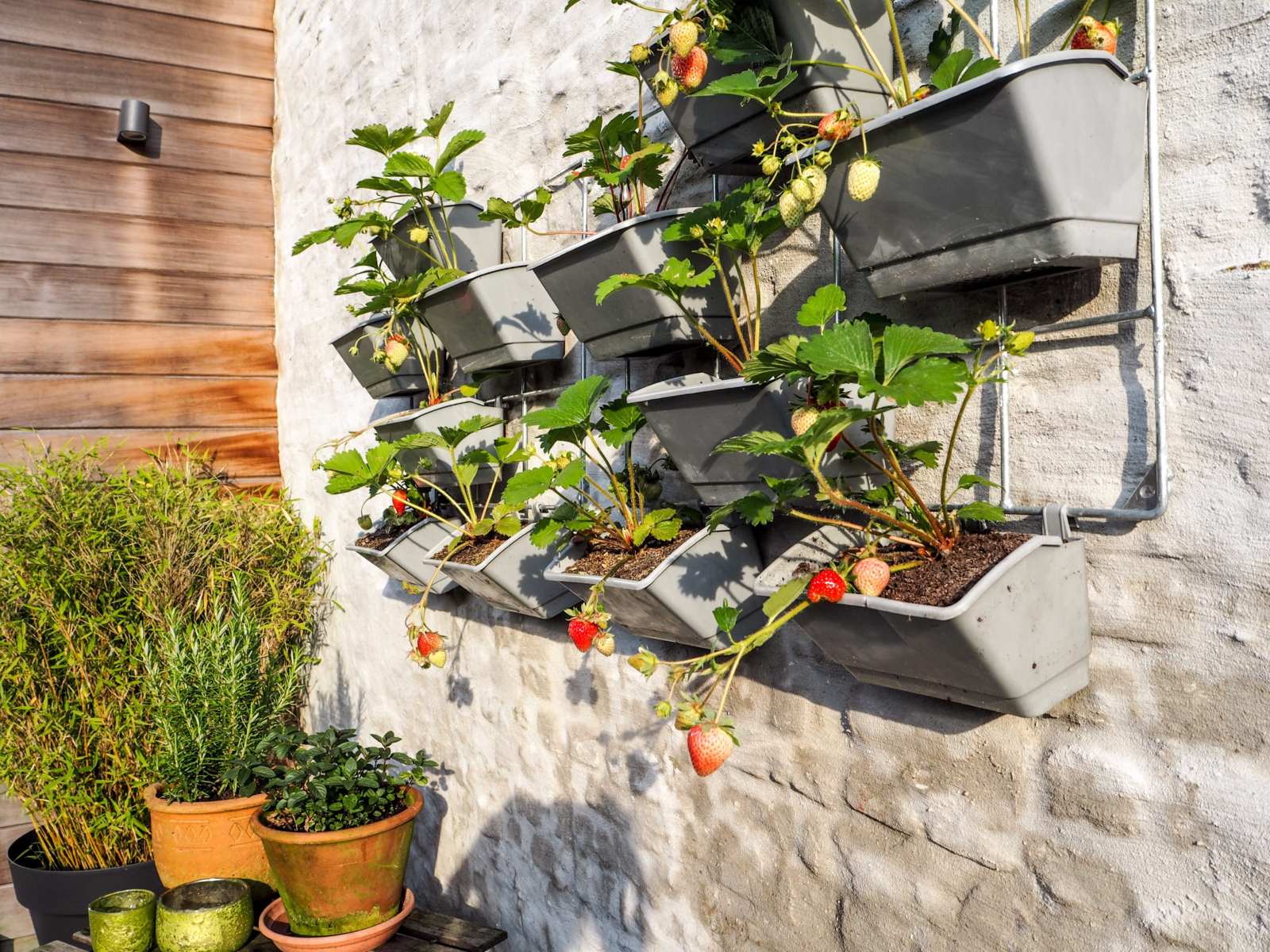
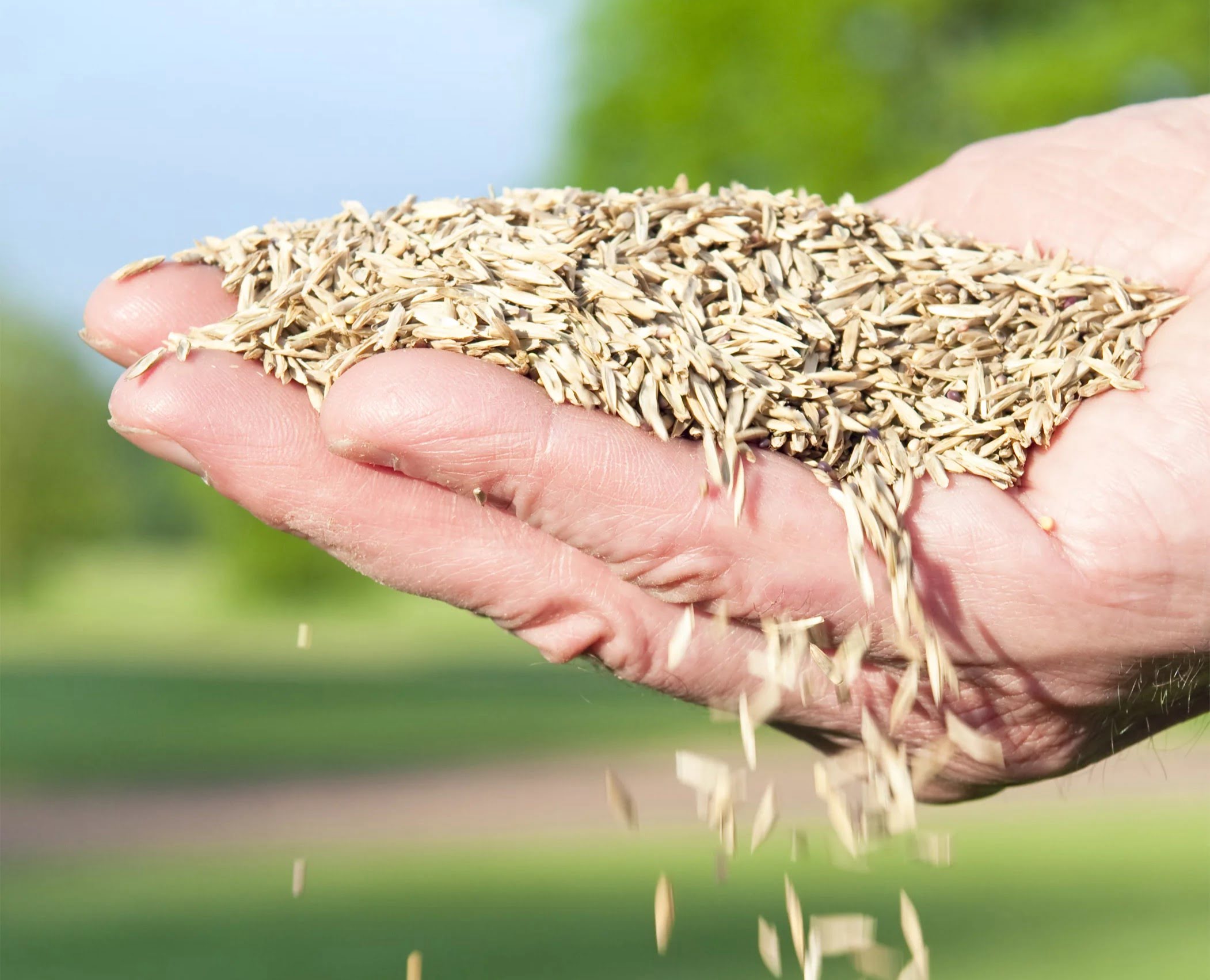
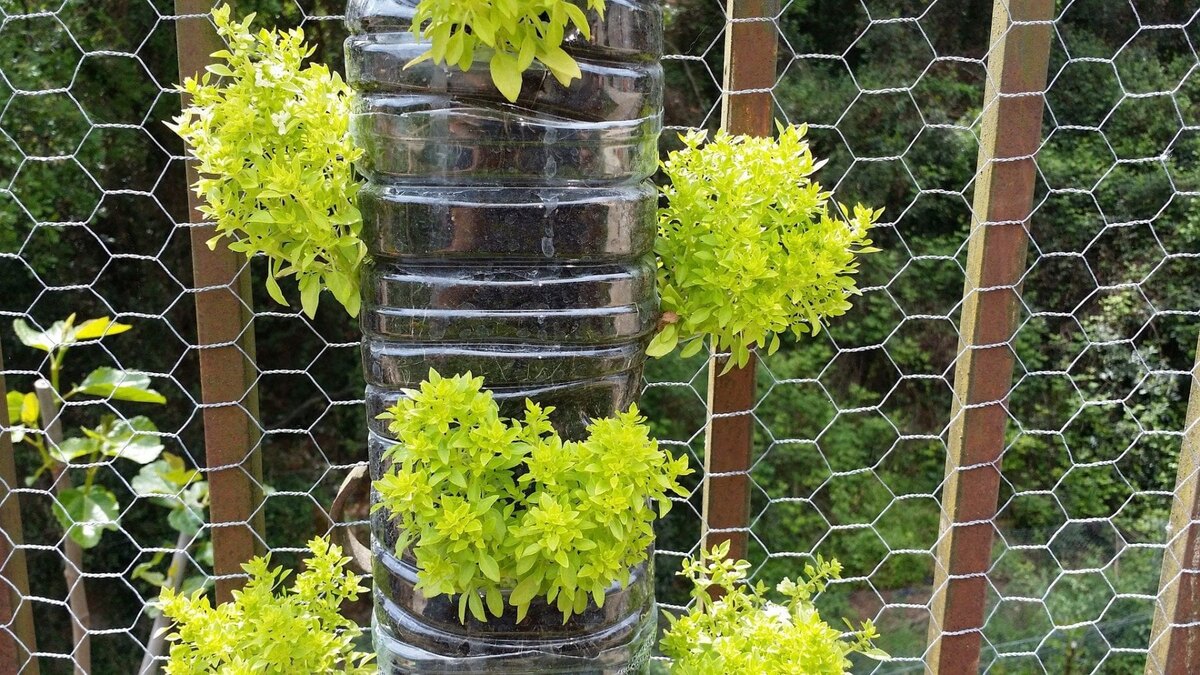




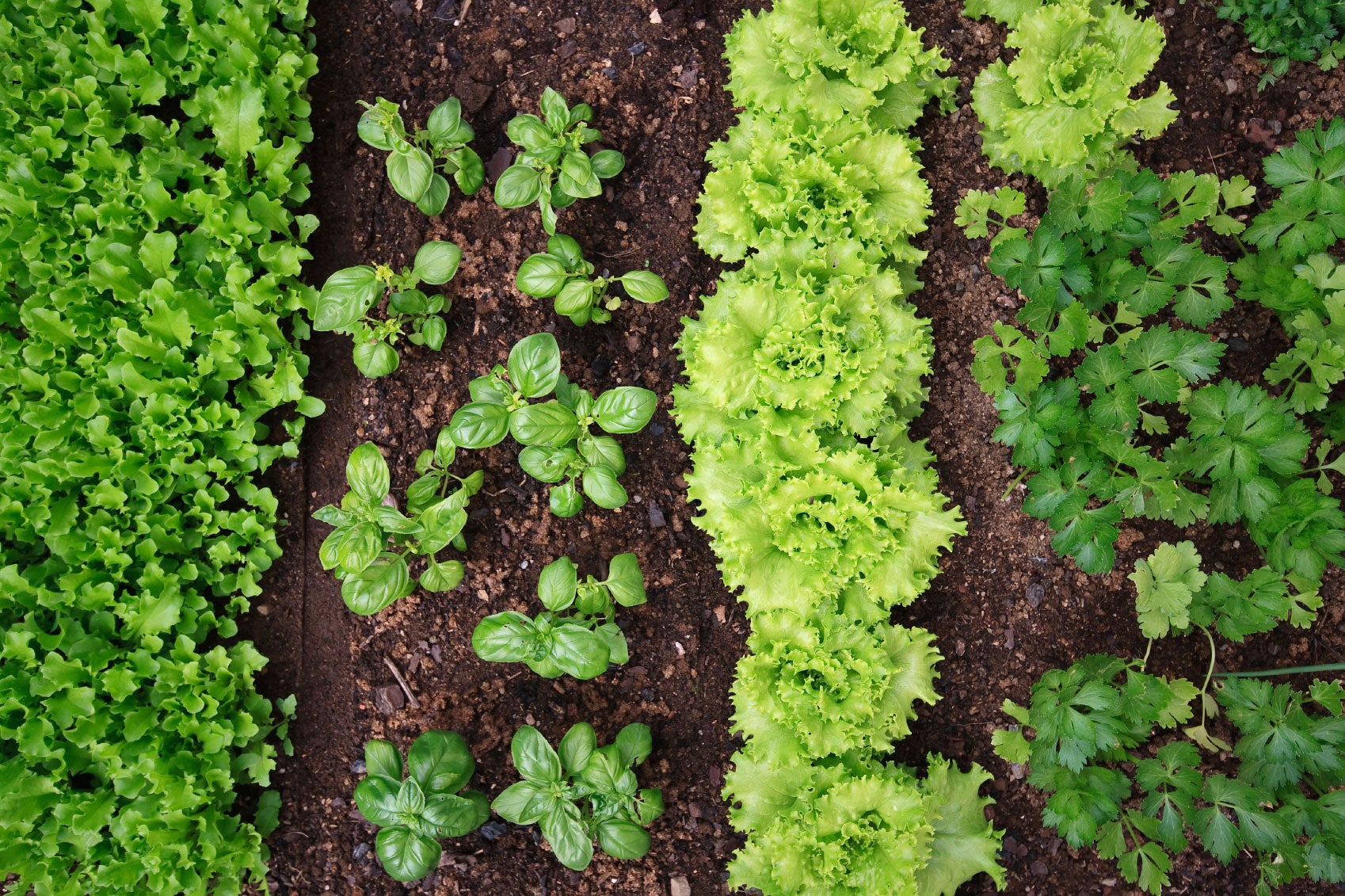
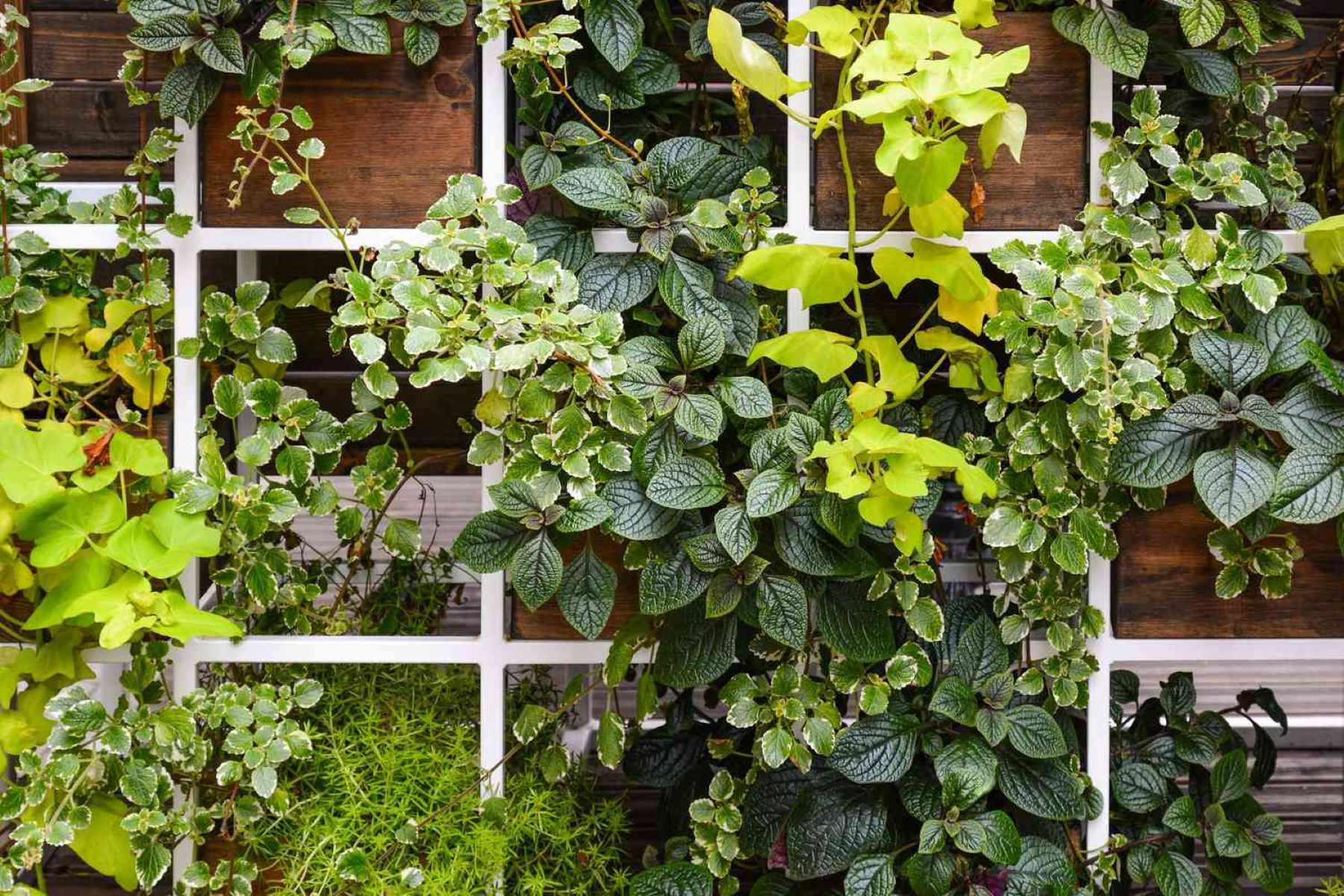
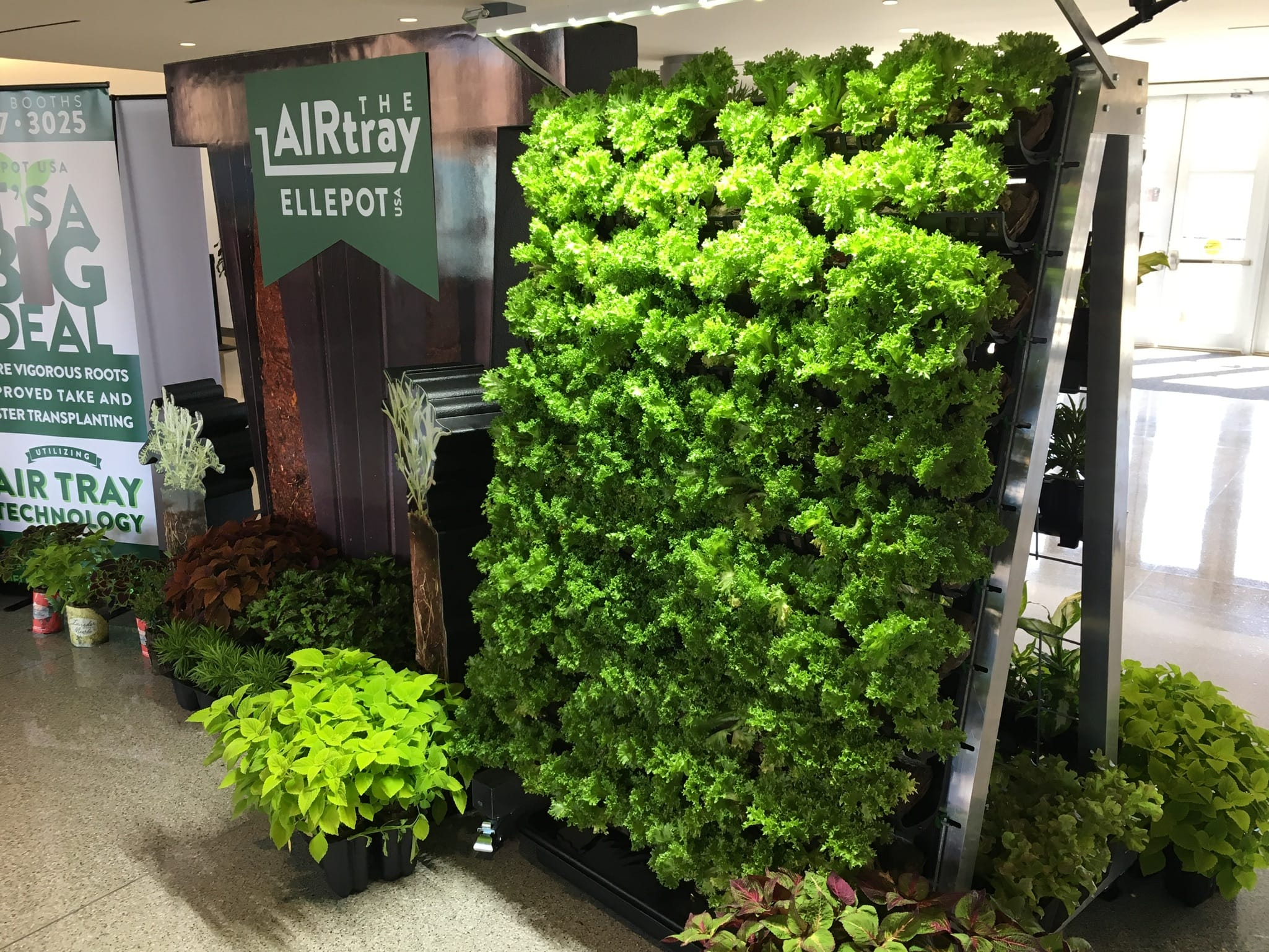

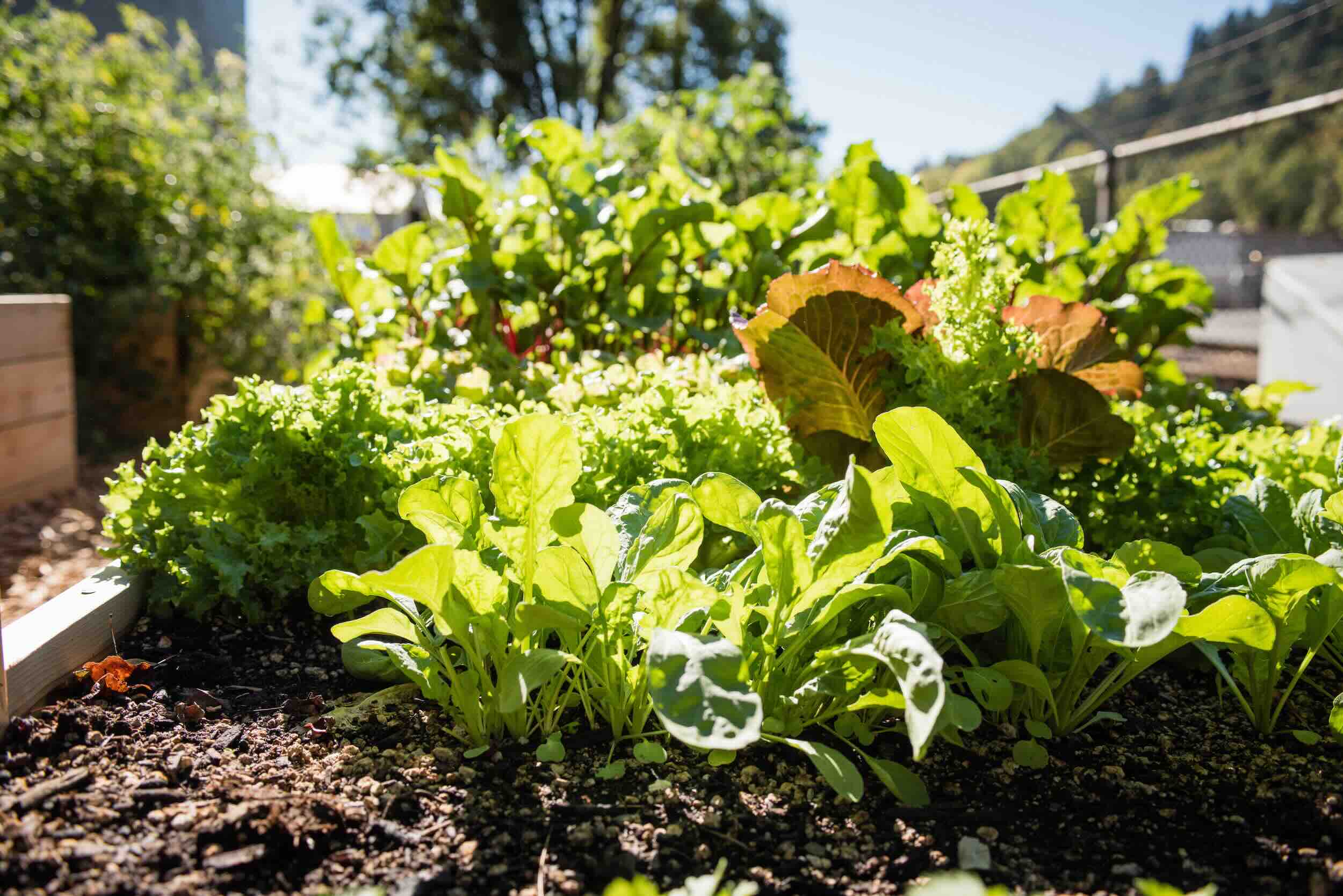

0 thoughts on “What Are The Best Plants To Grow In A Vertical Garden In Florida”